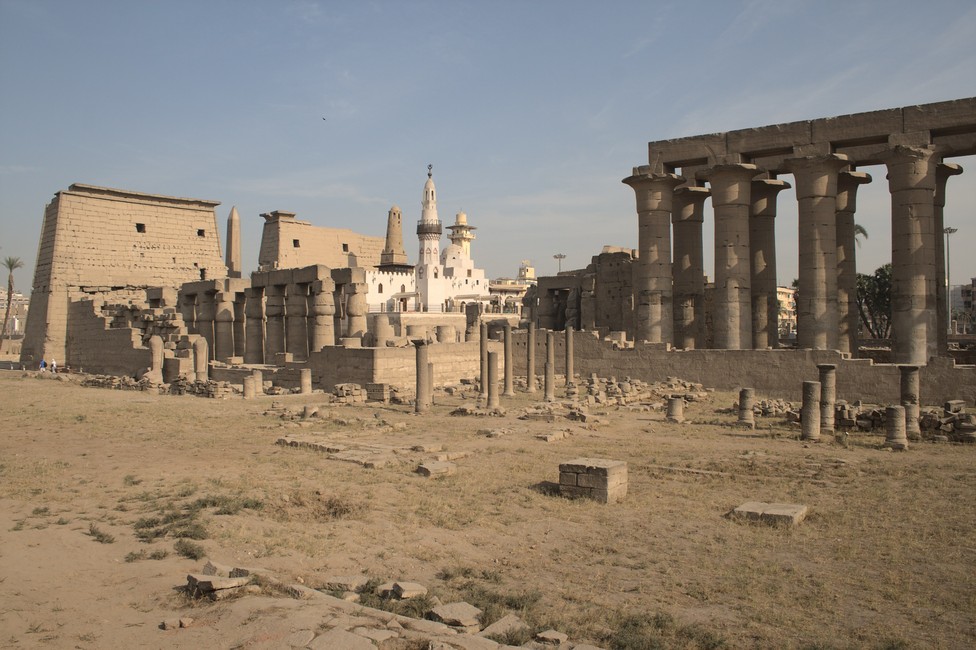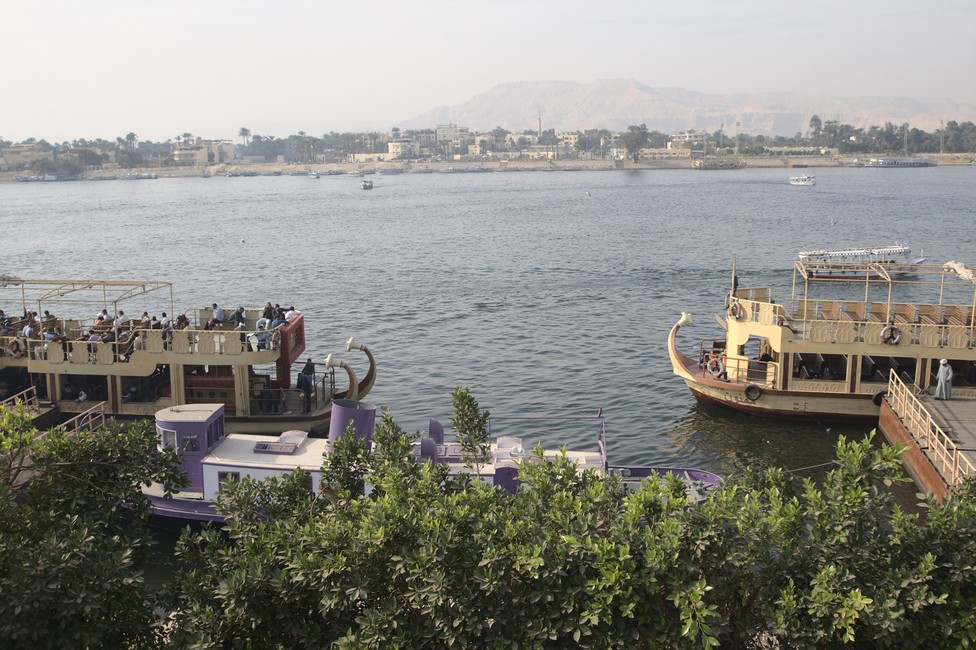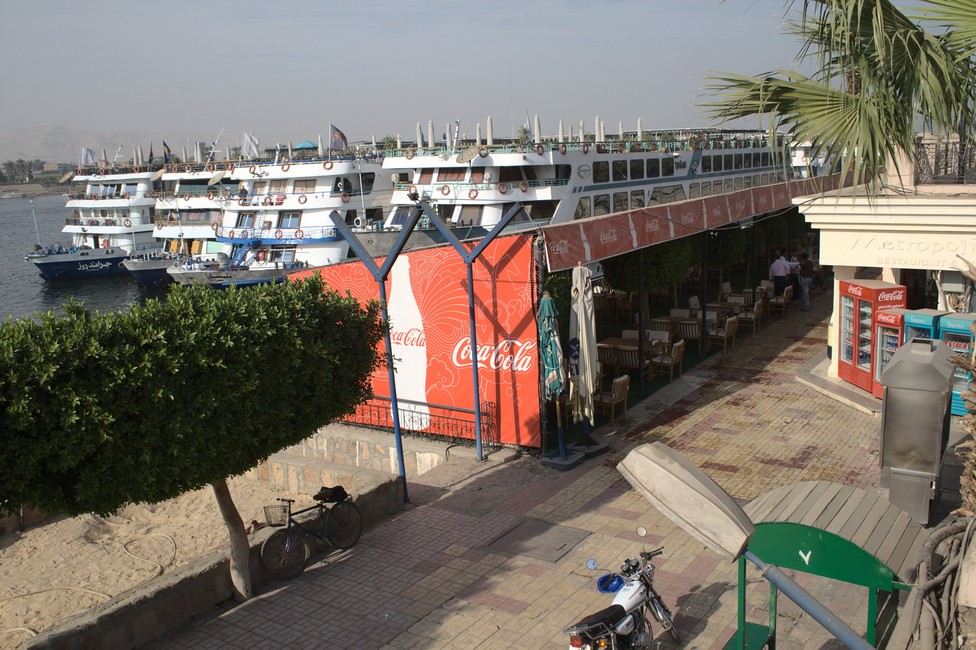From the Old Town you can see the Luxor Temple, the second of the highlights of the city.
The Luxor temple fulfilled two tasks. At New Year the Set Festival was celebrated. The statues of the gods Amun, Mut and Khonsu were brought here in portable boats from the 2.5 kilometres distant Karnak temple . The celebration lasted for 11 days initially, then 27 days. The second task was to renew the deification of the king, which was done each year from the accession to the throne and was celebrated here in the temple.

Well preserved is the first pylon, which was built by Ramses II.
The pylon is decorated with representations of the heroic deeds of Ramses. In front of the 24-meter high wall are some colossal statues of Ramses II and an obelisk from rose granite.
Well preserved are also the colonnades and the courtyard of Amenhotep III.
Interestingly there was built a mosque in the middle of the temple later. This is the Abu al Haggag Mosque, which was dedicated to a local saint and Sheikh. The entrance is outside the temple area.

We want to sit a little while at the Nile bank and watch the activities here. The ferry connects Luxor with Guma , an important link because the ferry brings the employees of hotels and tourism businesses from their homes over to Luxor to work. It is quite interesting that the ship was built in the shape of a sun bark, and has quirky tips.

The Nile was to the 19th Century the only way between Northern and Southern Egypt. For centuries it was the most important transport route.
There was no easier and faster way to transport goods, to send messages and to travel to other parts of the country. Probably the first boats were simple made from papyrus , these boats were used for hunting by the pharaos and used to travel only short distances. Even more elaborate wooden boats were known. They had several oars, a long, narrow sails and a rudder. In the Middle Ages the Nile was sailed by 36 000 ships. The simple sailing boats are called felucca.
A trip from Cairo to Luxor would take two months with favorable wind. Traveling on the Nile has dramatically changed when Thomas Cook in 1869 brought his first tour group to Egypt and housed them on two steamships.
Thus the package holiday was born. Instead of the simple steamers, huge cruise ships now cross the Nile with the comfort of stylish hotels.

The schedules are strictly observed, because the Nile is much traveled.
But we do not want to make a nile cruise, but have ordered a taxi driver to the campsite because we want to go to the Temple of Hatshepsut.